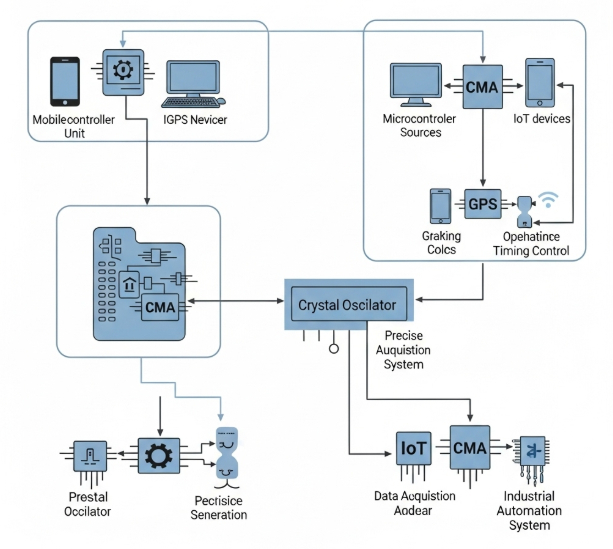What is the most stable atomic clock?
Jul 23, 2025
In the age of artificial intelligence, computing systems are pushing the boundaries of speed and complexity. From large language models to high-throughput training clusters, timing precision is the invisible thread holding everything together. At the heart of these systems lies the crystal oscillator—a compact yet critical component that maintains a stable frequency for synchronized processing across thousands of nodes.
AI infrastructure depends on distributed systems with tightly coupled processors and memory modules. Any timing drift can result in computational errors or degraded performance. The crystal oscillator ensures stability by converting the mechanical resonance of a quartz crystal into a highly accurate clock signal. This process is remarkably resilient, but it’s also sensitive to temperature shifts, electrical noise, and mechanical vibration—all of which are common in high-performance data centers.
To address these challenges, various specialized oscillators are used. For instance, temperature-compensated crystal oscillators (TCXO) use internal circuitry to adjust for temperature variation, minimizing frequency deviations. In AI accelerators, even minor timing instability can lead to phase misalignment and data corruption. Here, low phase noise oscillators play a key role by minimizing timing jitter and enabling clean signal transitions, especially critical for high-speed interconnects like PCIe and NVLink.
For systems requiring ultra-high stability, oven-controlled crystal oscillators (OCXO) maintain the crystal in a controlled thermal environment. These devices offer excellent long-term stability and are often deployed in master clocks for AI clusters, where synchronization across GPUs and CPUs must be sustained over long operations. Unlike general-purpose clocks, OCXOs deliver fractional ppm (parts per million) stability over extended runtimes.
Another key technology is the voltage-controlled crystal oscillator (VCXO). These oscillators allow fine-tuning of the output frequency via voltage input and are widely used in phase-locked loops (PLLs) to dynamically synchronize subsystems. In adaptive AI environments, where frequency scaling is applied to manage power and load, VCXOs enable tight alignment of timing domains.
The importance of crystal oscillator reliability grows as AI systems scale. Clock failures or drift can disrupt neural network training cycles, compromise distributed consensus, or affect sensor fusion in AI edge applications. That’s why oscillator quality, temperature tolerance, and load stability are crucial selection criteria in AI hardware design.
In sum, behind the soaring performance of AI computing lies a quiet yet powerful timing foundation. Through innovations in crystal oscillator design, including TCXO, OCXO, and VCXO, modern systems achieve the precision, coherence, and stability required for cutting-edge computation. As AI architectures become more intricate, the demand for ultra-stable, low-noise frequency sources will only grow—cementing the crystal oscillator’s role as the heart of AI performance.
Read More

